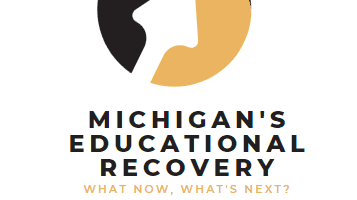For Educational Recovery, It’s Critical to Be Honest about Student Performance
Early in 2020 when “COVID-19” was new to us, we had little indication of how severe the pandemic’s impact would be on our education system and our students. And while the true impact likely may not be known for years, we are far more knowledgeable today about the severity of the learning disruptions thanks to recent state and national data.
Almost three years after the pandemic hit Michigan schools, the data has revealed dramatic declines in student performance for nearly all groups of students, including widening disparities for students who were already underserved.
For instance, we can see from the most recent M-STEP results that 3rd graders’ reading proficiency declined more for students from low-income backgrounds than for wealthier students, as well as for Black, Latino, and Native American students compared to their White peers. English learners saw the largest drop in reading proficiency, with nearly 7% fewer students who are English learners reading proficiently in 2022 than in 2019. These results illustrate longstanding achievement gaps in our state and show that many of these gaps have worsened in recent years.
The Education Trust Midwest recently released the 2023 State of Michigan Education Report, Beyond the Pandemic. The report highlights 10 research-based steps we can take as a state to combat educational inequities, restore unfinished learning, and set Michigan on a path to becoming a top 10 education state.
Being honest about students’ performance is critical to ensure we know how best to direct resources and supports to students. Data will also help inform how state leaders and districts should invest in solution-based, evidence-based strategies.
As we think about strategies to improve equity in the Michigan education system, and to help students restore unfinished learning, we must also keep in mind that changes to statewide testing will hinder our ability to evaluate whether these strategies have a positive impact on students’ academic outcomes in the future.
In fact, we must improve the quality and turnaround time of assessment reporting and move toward a more sophisticated student growth data system, which uses M-STEP data, aligned to national college- and career-ready standards. We also need the systems “necessary to show which interventions are being used and whether they are effective at accelerating student learning,” as we noted in an ETM blog post.
We should also look to the lessons from leading states to improve our data and accountability systems. For instance, Tennessee uses “projection reports” that help educators have the information they need to best serve their students in the classroom and help parents have the knowledge to better advocate for and support their children academically.
Finally, we should think about student achievement data as a tool to target support and resources to the districts and schools that serve the most students who are struggling academically. As for evaluating the effectiveness of such strategies, statewide assessment results are a key piece of data used in research doing just that.
All Michigan students deserve the same access to high quality education. It is imperative that we use consistent data to accurately identify areas where we can better serve students, evaluate the effectiveness of strategies intended to improve academic outcomes, and provide the information that school leaders, educators, and parents need to best support students.
__________
Emily Hatch is Senior Data and Policy Analyst for The Education Trust-Midwest.
This is the second in a series of blogs dedicated to exploring 10 research-based steps we can take as a state to combat educational inequities, restore unfinished learning, and set Michigan on a path to becoming a top 10 education state.


